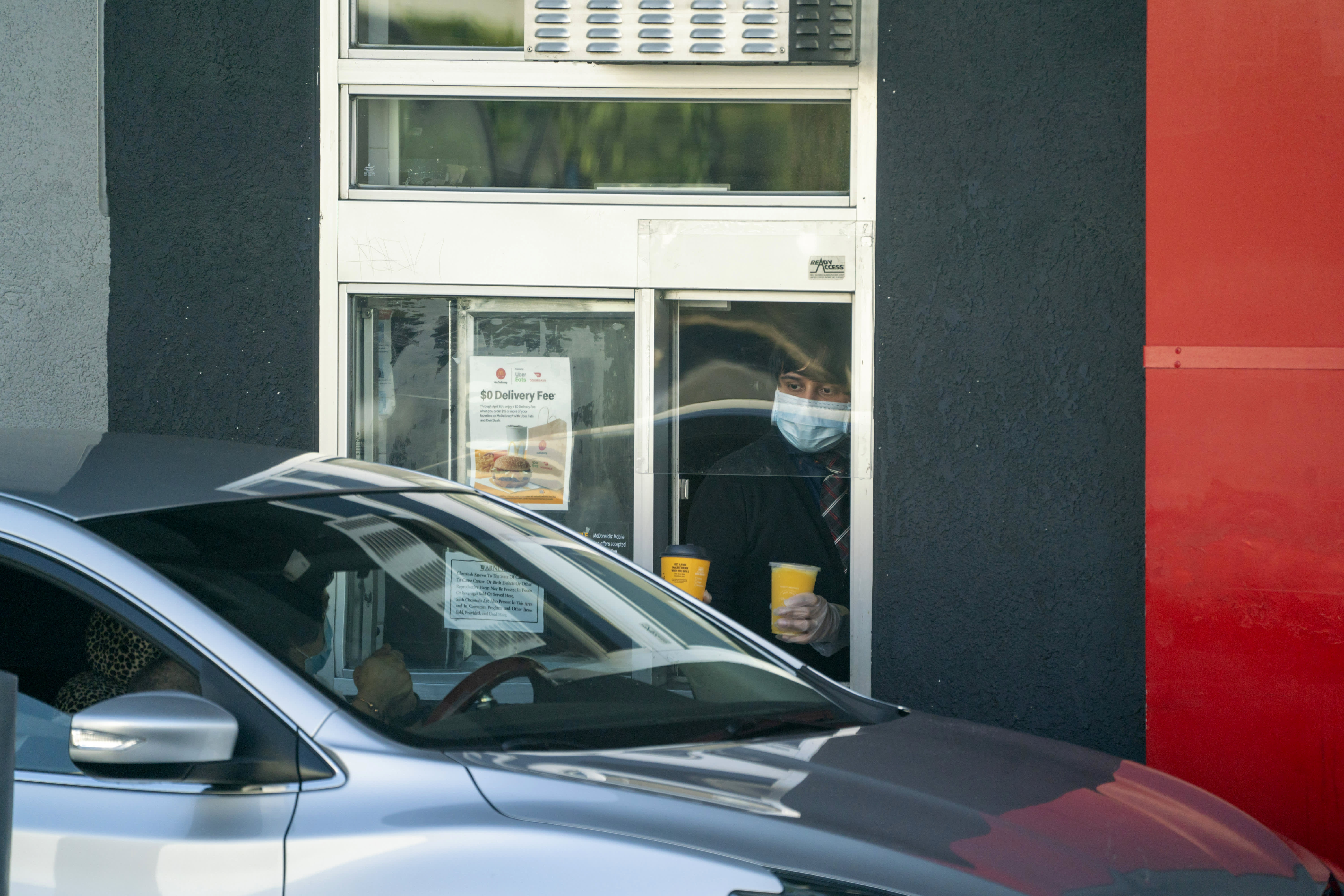Visits: 27

A customer receives an order from a worker in a protective mask at the drive-thru of a McDonald’s Corp. restaurant in Los Angeles, California, U.S.
Kyle Grillot | Bloomberg | Getty Images
As consumers increasingly pick up their fast-food orders from the comfort of their car, average drive-thru times across 10 chains slowed down by nearly half a minute, according to an annual study conducted by SeeLevel HX.
Drive-thru lanes have always been an important feature for fast-food restaurants, but the coronavirus pandemic has heavily shifted consumer preferences in favor of the easy pick-up option, which also appears more safe to consumers. Drive-thru visits increased by 26% in April, May and June, according to data from the NPD Group. Taco Bell said that it served an additional 4.8 million cars through its drive-thru lanes during its second quarter.
The abrupt change in consumer behavior has motivated restaurant chains like Starbucks and Chipotle Mexican Grill to add more drive-thru lanes to their footprints.
Total average drive-thru times slowed down by 29.8 seconds this year, weighed down by longer wait times, according to SeeLevel HX’s mystery shoppers. Only McDonald’s and Yum Brands’ KFC and Taco Bell chains have trimmed their times, the market research firm said. KFC topped the list for fastest drive-thru at 283.3 seconds.
Overall service times, or the time between ordering and picking up the food, was faster this year, perhaps in part due to chains slimming down menus during the pandemic to make kitchen operations easier.
In recent years, McDonald’s, Wendy’s and other chains have been upgrading their drive-thru lanes, in the hopes of cutting service times. Fast-food restaurants have also been trying to trim their menus to make orders more simpler for employees. And tech-focused additions, like digital menu boards, can steer customers toward ordering certain items and be easier to read.
According to the study, about 23% of restaurants visited by SeeLevel HX’s mystery shoppers had digital menu boards. This was the first time that the feature resulted in faster drive-thru times, shaving off an average of 12.3 seconds.
SeeLevel HX estimates that a digital menu board could result in nearly $28,000 in savings annually per location.
The study, which took place from June through August, also tallied up chains’ safety precautions during the coronavirus pandemic. Roughly 91% of respondents said that employees at the payment and pick-up windows were wearing masks, but only 78% said that workers were wearing gloves. More than half of brands included in the study had clear plastic barriers at all of their drive-thru windows.
And while customers may choose drive-thru lanes for a contactless experience, the study found that 80% of respondents had their orders handed to them by an employee, instead of being placed on a tray or window.

